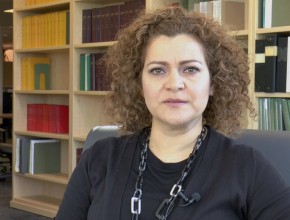Related McMaster Perspective episodes
Caron F, Jaeschke R. Principles of smoking cessation. Part 1.Samaan Z, Jaeschke R. Principles of smoking cessation. Part 2.
References
Walker N, Howe C, Glover M, et al. Cytisine versus nicotine for smoking cessation. N Engl J Med. 2014 Dec 18;371(25):2353-62. doi: 10.1056/NEJMoa1407764. PubMed PMID: 25517706.Roman Jaeschke: Good afternoon. Welcome to another edition of McMaster Perspective. We again are talking to Doctor Francois Caron. We met before and talked about varenicline and bupropion and nicotine replacement therapies [See: Principles of smoking cessation. Part 1], but there are two other possibilities, or two other things, which are used as an adjunct to stopping smoking. One is a medication called cytisine and the other ones are e-cigarettes. I wonder if you could expand on both those options. Maybe first cytisine?
Francois Caron: This is quite interesting. Cytisine has not been really known in North America before the last few years, but it has been known for about half a century in Eastern Europe, as it has been used after the Second World War. It is derived from the leaves of a shrub that were used by militaries to try to replace tobacco; cytisine is a drug derived from that. It has been used more frequently lately and we have quite a great amount of evidence that it works for tobacco cessation. Actually, 2 recent articles in the New England Journal of Medicine in the last 5 years have showed that there is benefit of cytisine for that indication. It is cheap, it costs less than most other nicotine cessation therapies, but it is not available right now in North America. Actually, varenicline, which we talk about in the other [McMaster Perspective episode], is a derivative of cytisine; cytisine has been modified to be more specific to the nicotine receptor. Varenicline is more expensive but may be a more efficacious option than cytisine.
RJ: It was interesting to see that in the previous meta-analysis the odds for quitting smoking were highest for cytisine.
FC: Yes.
RJ: Do we know anything about the safety of it? Do we know about any side-effect profiles?
FC: When we look at side-effect profiles in those studies, they are very similar to varenicline. A lot of patients have gastrointestinal side effects, like nausea, constipation, or diarrhea, because there are nicotine receptors in the gut. Those side effects usually tend to go away with use, with time, so within weeks.
RJ: We will see where the world will go on this one. The second part: e-cigarettes. Lots of controversies, lots of opinions. What is your take on e-cigarettes these days?
FC: This is a field right now that looks a bit like the Far West: there is not a lot of regulation over e-cigarettes and the evidence is growing slowly. What we need to send as a message is that e-cigarettes are definitely less toxic than usual cigarettes, so they are a reasonable option for smokers who want to try to stop smoking. The perceived risk of e-cigarettes may be for new smokers, because it could be an entry or a gateway to actual smoking. There is actually conflicting evidence, either from America or from Europe, that this could be the fact that adolescents or new smokers can be hooked by e-cigarettes.
RJ: And then move to regular cigarettes?
FC: Right. There is an urge right now to have good regulation framed for those devices.
RJ: Or regulate them, but we do not know the consequences of those regulations.
FC: Exactly.
RJ: Francois, if you had your friend coming to you saying, “Listen, I am fed up with my smoking, help me,” what would you do? Speaking from both parts of this interview.
FC: This is the risk factor that is the most morbid, and that brings the most disability in the world. We should not neglect smokers. We should treat [smoking] like other risk factors, like hypertension, diabetes, renal failure. We do not let a patient with hypertension from the hospital. We do not let a patient with dysglycemia from the hospital. We should treat those patients adequately and we know that those pharmacological options work, they increase the rate of quitting, so they should be proposed as the first intervention in smokers. We have a lot of nonpharmacological measures also that should be suggested to patients, like “quitline.” We know they work – we have evidence for quitlines – and ideally the care for those patients should be somewhat systematized.
RJ: I do not know what quitline is.
FC: In Canada we have the stop [smoking] quitline. It is a phone number you can call and they suggest to you different options that could be in your area. Some initiatives in different areas in Canada provide free nicotine replacement therapy to patients. So there is a lot of options that are available to patients and this is one of them.
RJ: And if your friend would tell you, “Listen, I heard about different possible pharmacological interventions, tell me which one should I take”?
FC: It is hard to make a decision between, say, nicotine replacement therapy, bupropion, and varenicline. I would say that nicotine replacement is a good first intention or first trial for a motivated smoker that is able to set a quit date, and then people can step to the pharmacological therapies, the pills.
RJ: And is it better to stop cold turkey, right at this moment, at some stage, or is it better to wean yourself down?
FC: That is a good question and it has been addressed in a recent study. The reduce-to-quit strategy is equivalent to the cold turkey strategy. They tried the [reduce-to-quit therapy] in a cohort of patients that could not stop at the first trial and they showed that it could work, and varenicline was actually effective in that kind of a therapy.
RJ: And the medications, varenicline and bupropion – how long do you use them? You start them on a usual dose?
FC: If you look at package inserts, they will tell you that it is better to start varenicline at a low dose and then increase to the full dose of 1 mg twice daily, but you can actually start varenicline at the full dose of 1 mg twice daily and then titrate down according to the side effects.
RJ: But this would be a little more off-label use?
FC: This is an off-label use.
RJ: And in terms of bupropion, you would also start with a lower dose?
FC: Yes, it is the same thing. You could start with the maximum dose of 150 mg twice daily and then titrate down.
RJ: This would be off-label?
FC: Yes.
RJ: And the on-label dose would be 75 mg twice a day or 150 mg once a day?
FC: 75 mg and then you increase to 150 mg.
RJ: Thank you, very useful.
 English
English
 Español
Español
 українська
українська




